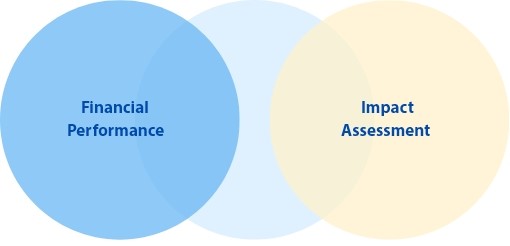What is MIND?
Launched in 2021, BPMB’s Measuring Impact on National Development (MIND) which was jointly developed with the World Bank Group, shifts project evaluation from a credit-centric assessment to a holistic end-to-end assessment.
With MIND, the Bank assesses the environmental, social and economic impact of each transaction, aligned with the Government's 12th Malaysia Plan (12MP) and the United Nations' Sustainable Development Goals (SDGs). MIND is also continuously evolving to help the Bank identify sustainable financing prospects and ensure meaningful impact delivery to the nation and the community.

How MIND is Changing the Game?
Traditionally, financial institutions assess projects or companies based on its financial performance and indicators such as on credit risks and profitability.

Borrower in need of funding

Borrower submits application to bank

Bank conducts credit accessment

Approval subject to financial performance

Holistic Assessment
Bridging Gaps
BPMB bridges financing gaps by participating in impactful projects in underserved markets and sectors to fulfil our national development mandate.
BPMB utilises MIND to measure and manage the performance of these projects from two perspectives - developmental impact and financial-economic. The twin perspectives ensure a holistic performance appraisal.
Delivering Positive Impact Through MIND
At BPMB we believe that any positive impact delivered by our financing should be:
Measureable

To evaluate whether any project is sustainable, the impact it generates must be tangible and more importantly, quantifiable. This allows us to prioritize sustainable projects.
Meaningful

A sustainable project must deliver impact that is useful, relevant and important to its beneficiaries. A facility is only meaningful when it truly addresses the needs of the intended users, and not only ‘ticks the box’.
Continuous

The impact from sustainable project or infrastructure should be long-lasting, which ensures that the benefits can be enjoyed for generations.
How Do We Measure Impact?
Through MIND, we effectively measure impact through qualitative and quantitative assessments based on a selected set of indicators.

Development Impact Index
- SDGs*
- Economic growth
- Safeguards**
- Beneficiaries

Financial-Economic Index
- Credit risk rating
- Private sector Crowding-In
- Private sector Crowding-Out

Qualitative Assessment
- Development challenge
- Development objective
- Theory of change
*Sustainable Development Goals
**To prevent risks that may deter social & environmental progress
What We Have Measure Through MIND Thus Far
MIND serves a dual purpose: not only does it quantify BPMB's impact on national development, but it also drives progress in the Bank's sustainability journey. The following figures demonstrate the impact of BPMB's financing in 2022 and cumulatively since the introduction of MIND in 2019.
MT

Resource to energy (R2E) integrated waste treatment
Anticipating the utilization of 100 Metric Tons of R2E to fulfill the specialized treatment capacity required for industrial waste management.

Jobs created
Increasing job opportunities and boosting purchasing power.
KM

Road infrastructure development and maintenance
Developing, renewing, and maintaining road infrastructure to ensure secure and efficient connectivity for communities and businesses.
MWH

Renewable energy generated annually
Renewable energy harnessed through mini and small hydro power plants.

Unit affordable housing
Safe and stable housing accessibility for a diverse array of individuals and families.

Students served
Providing access to quality education and lifelong learning opportunities for individuals.

Patients served
Ensuring access to improved healthcare services that cater to a wide range of community healthcare needs.
Mil

Green financing
We are committed to offer green financing solutions that helps our clients transition towards sustainable practices and enhance resilience against climate-related events.

